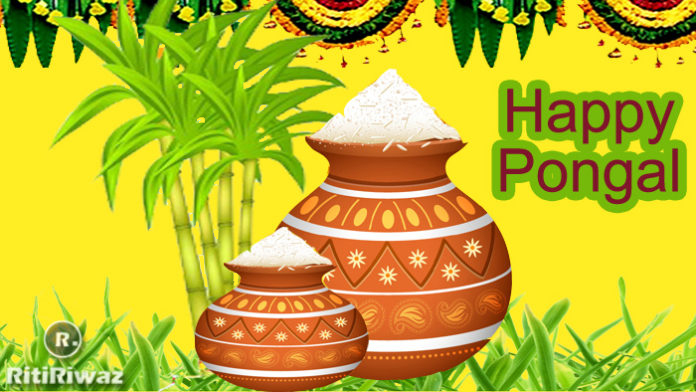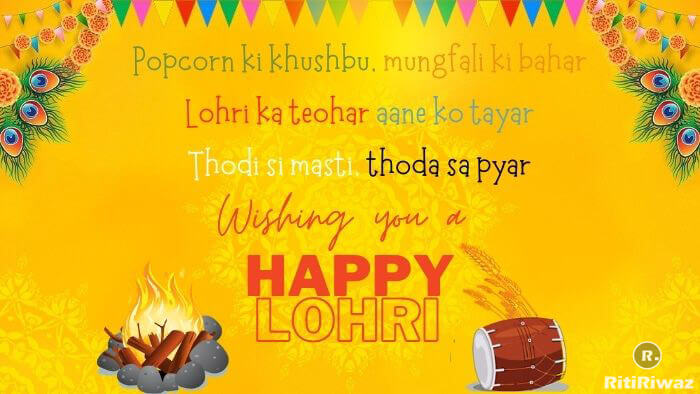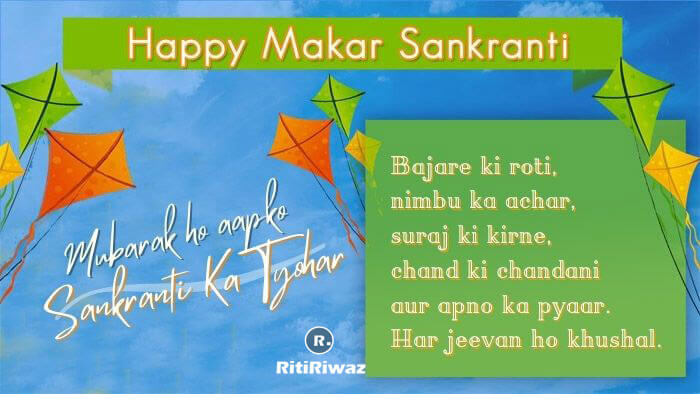Holi Legend – Mythological stories associated with the festival

The festival of colors Holi is celebrated with much pomp and vigor in India. It falls next day after full moon (Purnima) in the month of Phalguna, it celebrates the arrival of spring and end of winters and victory of good over evil. The date falls typically in March, but sometimes late February of the Gregorian calendar. The main day of Holi is simple a day to have fun and no religious rituals are performed on the day of Dhulendi.
Holi festivities mark an occasion to reset and renew ruptured relationships, end conflicts and rid themselves of accumulated emotional impurities from the past. The festival fills a sense of hope and joy in hearts of people and they believe in the virtue of being truthful and honest and also to fight away the evil. In many parts of the country, farmers celebrate their harvest with this festival. And of course, children all over the country enjoy the colors and water games!
Holi dates back to ancient mythological incidents. Among the plethora of tales linked with Holi, we bring you the most well-known and popular origin stories:
Holika and Prahlad story
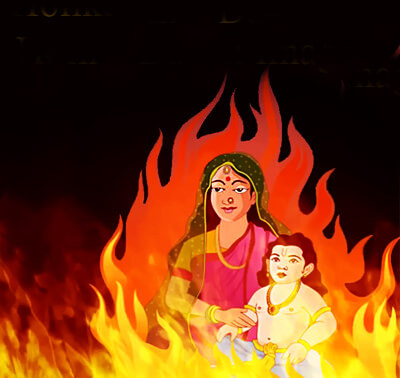
The legend says there once lived a devil and powerful king, Hiranyakshyap who considered himself a god and wanted everybody to worship him. He was granted a boon by Brahma: Hiranakashyap could never be killed by man nor animal; he could not be killed indoors or out; neither above the ground nor on it; and neither in daylight nor in the dark. He became very arrogant as it became impossible to kill him with all those conditions.
He thought himself to be the most powerful person in the universe, even more powerful than God. He struck fear in the hearts of everyone in his kingdom and insisted them to worship him and no one else. But in his whole kingdom every one worshipped him except his own son Prahlad. Prahlad was a devotee of Lord Vishnu. He tried hard to convince his son to stop worshiping Vishnu, but Prahlad would not budge.
Out of anger he decided to kill Prahlad He ordered his soldiers to push Prahlad off a cliff, but Vishnu saved him by making the land filled with large stack of hay. He was pushed into a well , but Lord Vishnu made the well water rise so that Prahlad could swim and came back unharmed. He was ordered to be trampled by elephants, but the elephants saw the kindness in Prahlad’s heart and refused to step on him. Prahlad was thrown into a pit of poisonous snakes, but instead of biting him the snakes began to dance.
After trying all other means to kill him Hiranakashyap was exhausted, he then remembered his evil-hearted sister, Holika who have been granted a boon of being unharmed by fire. Hiranakashyap arranged for Holika to sit on a wooden pyre with Prahlad on her lap and ordered it to be set alight. As the pyre was blazing Prahlad keep on chanting Vishnu name and Lord Vishnu transferred Holika’s boon to Prahlad. Holika was reduced to ashes in that fire and Prahlad came out without a single burn.
Every since after that time a bonfire is lit on Purnima to mark the victory of Prahlad or the victory of good over evil. Holika Dahan is celebrated to rejoice the freedom from Hiranakashyap’s fear is celebrated with the joy of colors.
(Moral of the Holika story: Those who love God shall be saved, and they that torture the devotee of God shall be reduced to ashes. When Holika was burnt, people abused her and sang the glories of the Lord and of His great devotee, Prahlad. In imitation of that, people even today use abusive language, but unfortunately forget to sing the praises of the Lord and His devotee!)
Legend of Radha and Krishna
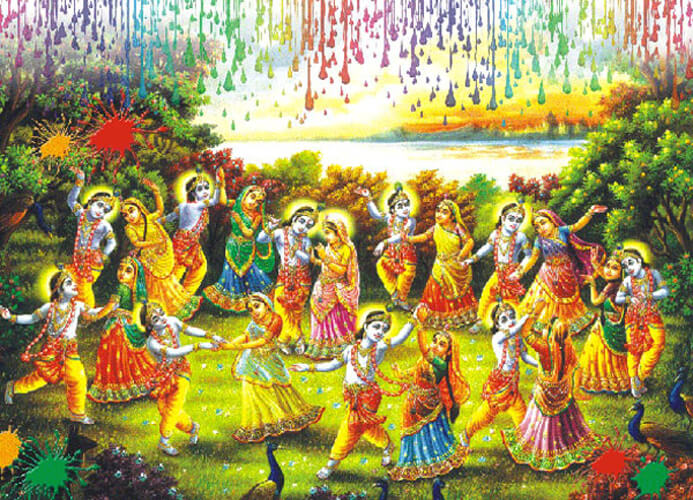
Lord Krishna is associated with Holi, as Krishna started the tradition of playing with colors with his beloved Radha and other gopis. The young Krishna would complain to his mother Yashoda about why Radha was so fair and he so dark. Yashoda advised him to apply color on Radha’s face and see how her complexion would change.
Gradually, the play gained popularity with the people and became a tradition. So at Holi, images of Krishna and his consort Radha are often carried through the streets. No wonder, there is no match to the Holi of Mathura, Vrindavan and Barsana – the places associated with the birth and childhood of Radha and Krishna. The Holi play of Krishna and Radha with Gopis is well documented in hundreds of ancient paintings, murals and scriptures.
The Legend of Kaamadeva
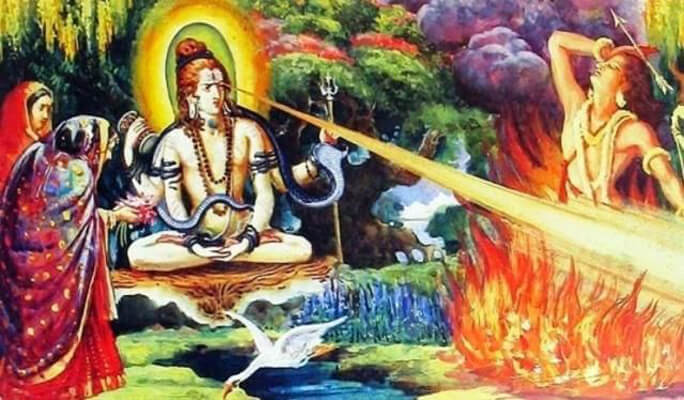
Among Shaivism and Shaktism Holi is linked to Shiva. In South India, people worship Kaamadeva– the god of love and passion for his extreme sacrifice. According to a legend, Lord Shiva married Sati against the wishes of her father Daksha Prajapati.
Daksha Prajapati broke all relations with his daughter and stop calling her for any functions. Once he organized a Yagya and Sati went there against the wishes of her husband Shiva. As expected Daksha Prajapati insulted her and Lord Shiva. Sati realized her mistake and as self-punishment she burned herself to death. On the news of Sati death Lord Shiva was infuriated and renounced everything.
Sati was reborn as Parvati and tried hard to win Shiva’s heart. But when Shiva went into deep meditation, Goddess Parvati seek help from the Hindu god of love Kamadeva on Vasant Panchami. Kaamadeva shot his powerful love arrow on Lord Shiva to revoke his interest in the worldly affairs in the interest of the earth. However, Lord Shiva was enraged as he was in deep mediation and opened his third eye which reduced Kaamadeva to ashes. Though, later on the request of Rati, Kaamadeva’s wife, Shiva was pleased to restore him back. This return of the god of love, is celebrated on the 40th day after Vasant Panchami festival as Holi.
(Moral of the story: This incident of burning off kama is called kamadahana or Holi. As the lust was won over by Lord Shiva the kamadahana or Holi festival is celebrated as an event associating with the Bliss of God. So following kamadahana during Holi, people put the powders on themselves and others remembering this victory over lust.)
The Legend of Dhundhi
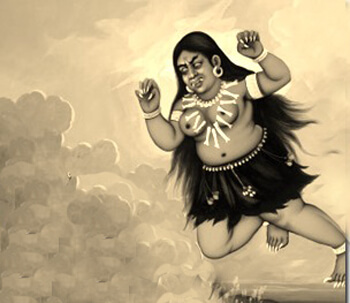
It was also on this day that an ogress called Dhundhi, who was troubling the children in the kingdom of Prthu (or Raghu), was made to run for her life, by the shouts and pranks of the mischievous boys. Though she had secured several boons that made her almost invincible, the noise, shouts, abuses and pranks of boys became a chink in her armor due to a curse from Lord Shiva.
On the day of Holi, the children managed to chase her away. They got intoxicated on bhaang and drunk and then followed Dhundi to the limits of the village, beating drums, making loud noise, shouting obscenities and hurling insults at her and continued doing this until she left the village for good.
This is the reason that even today young boys are allowed to indulge themselves in rowdiness, using rude words and intoxication on Holi. Now, the children like to play pranks at this time. The day itself came to be called “Adada” or “Holika” since then.
The Legend of Pootana
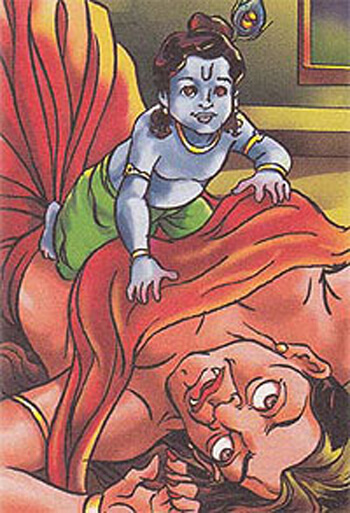
Some also celebrate the death of evil minded Pootana. The ogress tried to Lord Krishna as an infant by feeding it poisonous milk while executing the plan of Kansa, Krishna’s devil uncle. However, Krishna sucked her blood and brought her end. Some who view the origin of festivals from seasonal cycles believe that Pootana represents winter and her death the cessation and end of winter.
Whatever legend you believe in the true spirit of the festival shall stay alive forever in the hearts of people who come to sing, dance and groove along the madness of colors. The festival signifies the victory of good over evil, the arrival of spring and the end of winter, and an opportunity to meet others. People are brought together to play and laugh, forget and forgive, to repair ruptured relationships.



